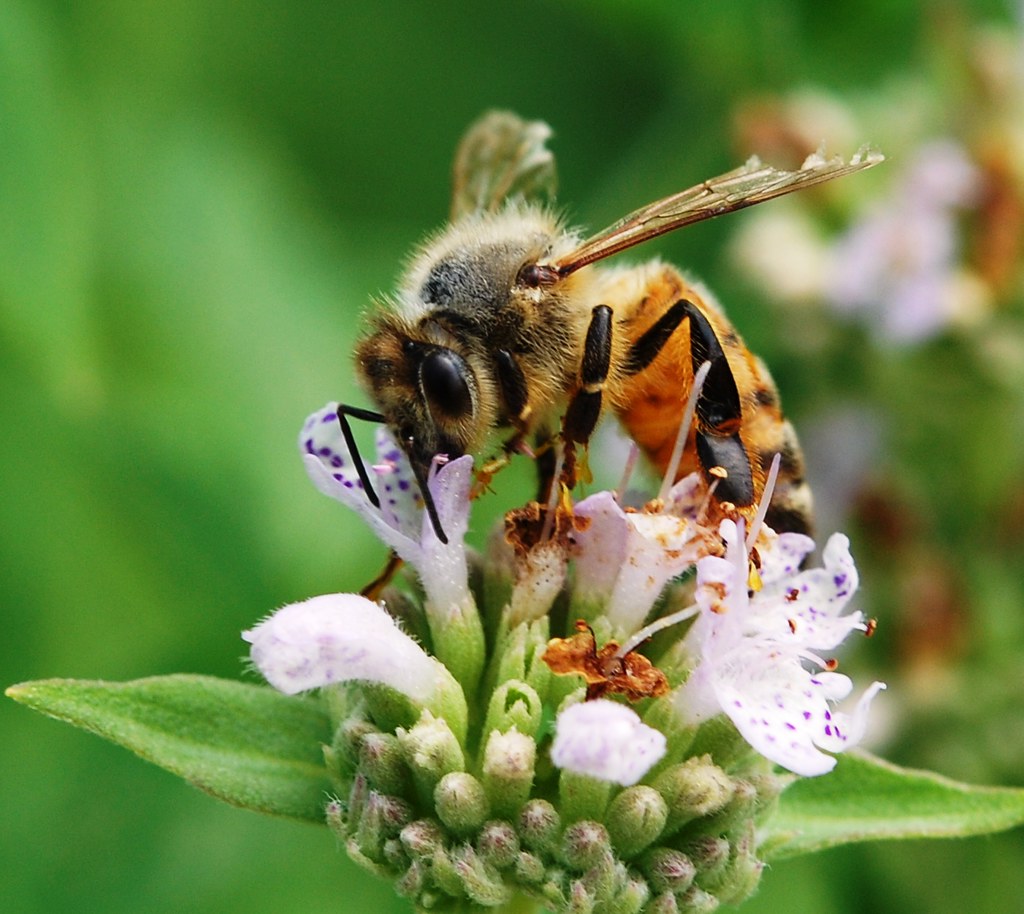 |
| Honey bee on Pycnanthem muticum flower cluster (photo by John Baker) |
Why I'm growing Pycnanthemum muticum in my garden...
1) It's native to Tennessee, as well as scattered sites across the Southeast, Mid-Atlantic and New England from Texas all the way to New Hampshire
2) Richard Hawke, Plant Evaluation Manager at the Chicago Botanic Garden, told me that he has seen P. muticum flowers attract at least a dozen types of bees, wasps, flies, moths and butterflies!
3) Hawke also mentioned that short-toothed mountain mint is considered to be deer-resistant.
4) Holly Scoggins, PhD, Assistant Professor of Horticulture at Virginia Tech, told me that P. muticum grows tallest (up to 4 feet) in moist soil, but that it also seems to be drought-tolerant.
5) The foliage has a nice minty scent.
Note: Despite their common name, mountain mints are not true mints (which are in the Mentha genus). In fact, according to the sources I consulted at the Nebraska Regional Poison Center (NRPC), Pycanthemums contain a chemical called pulegone that can be toxic to the liver. Pulegone does double-duty as an insect repellent, and NRPC does say that it is safe to apply small amounts of the plant externally to skin or clothing to ward off insect pests.
Also, some sources I consulted say that mountain mints can spread aggressively, others say they are much less rampant spreaders than 'true' mints. Either way, if mountain mint is happy where you plant it, you should probably expect that it will try to expand. That may not be an issue (especially in its native range) if it's planted with trees, shrubs or other robust perennials, but you may want to think twice about planting it next to any demure or delicate prized perennials.
4) Holly Scoggins, PhD, Assistant Professor of Horticulture at Virginia Tech, told me that P. muticum grows tallest (up to 4 feet) in moist soil, but that it also seems to be drought-tolerant.
5) The foliage has a nice minty scent.
Note: Despite their common name, mountain mints are not true mints (which are in the Mentha genus). In fact, according to the sources I consulted at the Nebraska Regional Poison Center (NRPC), Pycanthemums contain a chemical called pulegone that can be toxic to the liver. Pulegone does double-duty as an insect repellent, and NRPC does say that it is safe to apply small amounts of the plant externally to skin or clothing to ward off insect pests.
Also, some sources I consulted say that mountain mints can spread aggressively, others say they are much less rampant spreaders than 'true' mints. Either way, if mountain mint is happy where you plant it, you should probably expect that it will try to expand. That may not be an issue (especially in its native range) if it's planted with trees, shrubs or other robust perennials, but you may want to think twice about planting it next to any demure or delicate prized perennials.
Do you grow short-toothed mountain mint? If so, what has been your experience with this plant?
